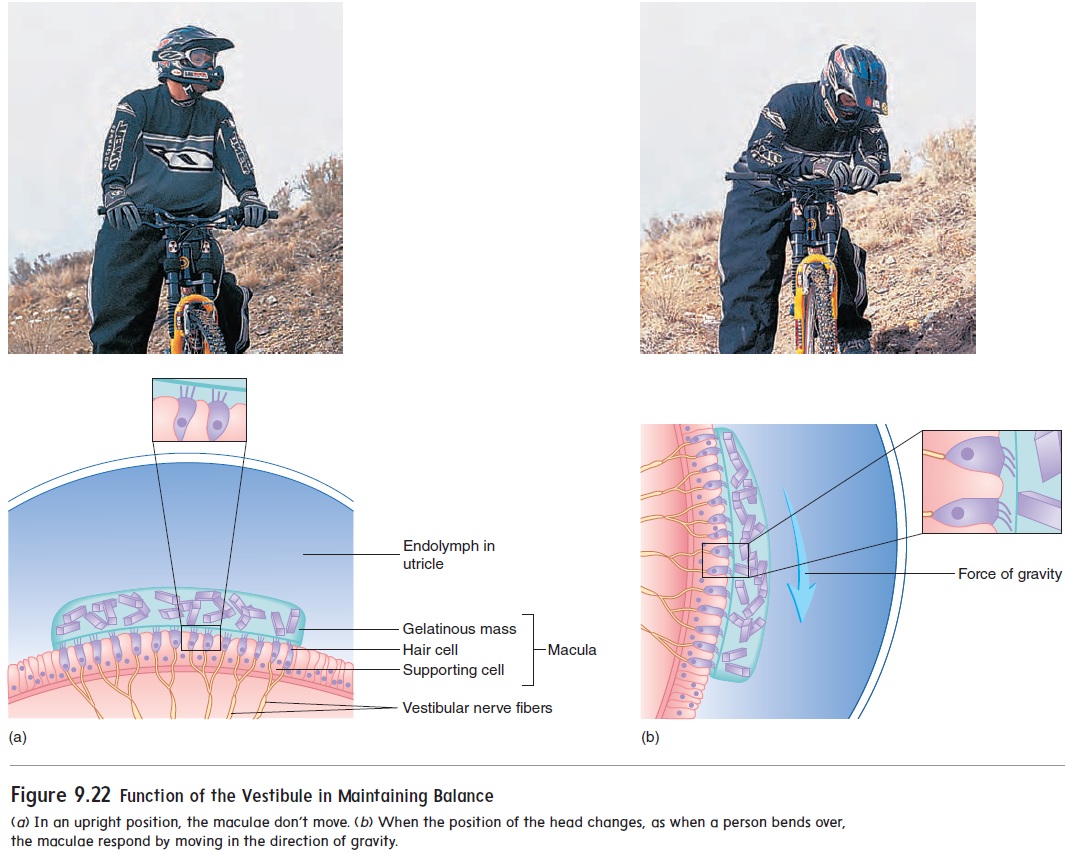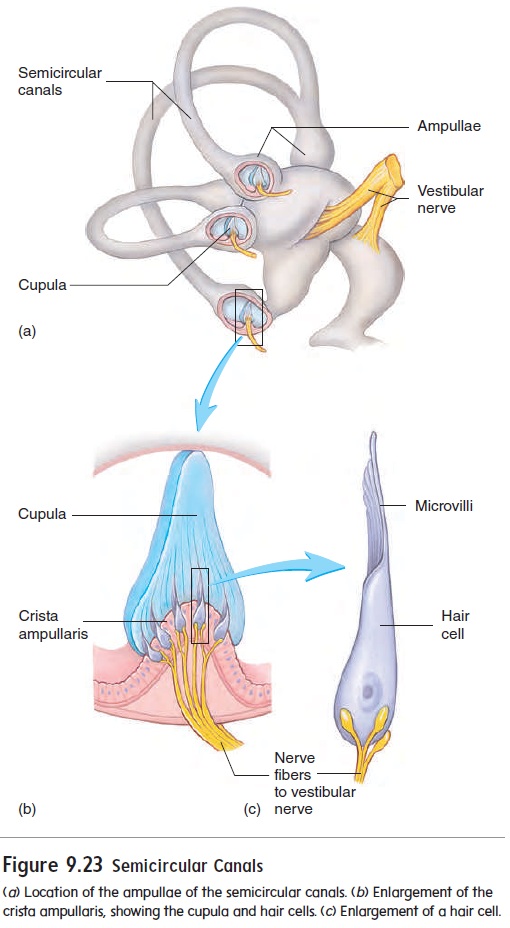Chapter: Essentials of Anatomy and Physiology: Senses
Balance - Ear
Balance
The sense of balance, or equilibrium, has two components: static equilibrium and dynamic equilibrium. Static equilibrium is asso-ciated with the vestibule and is involved in evaluating the position of the head relative to gravity. Dynamic equilibrium is associated with the semicircular canals and is involved in evaluating changes in the direction and rate of head movements.

The vestibule (ves′ ti-bool) of the inner ear can be divided into two chambers: the utricle (ū′ tri-kl) and the saccule (sak′ ūl) (figure 9.21a). Each chamber contains specialized patches of epithelium called themaculae (mak′ ū-lē), which are surrounded by endolymph. The maculae, like the spiral organ, contain hair cells. The tips of the microvilli of these cells are embedded in a gelatinous mass, often called theotolithic membrane, weighted by otoliths (ō′ tō-liths; ear stones), particles composed of protein and calcium carbonate. The weighted gelatinous mass moves in response to gravity, bending the hair cell microvilli (figure 9.21c) and initiating action potentials in the associated neurons. The action potentials from these neurons are carried by axons of the vestibular portion of the vestibulocochlear nerve (VIII) to the brain, where they are interpreted as a change in the position of the head. For example, when a person bends over, the maculae are displaced by gravity, and the resultant action potentials provide information to the brain concerning the position of the head (figure 9.22).

Three semicircular canals are involved in dynamic equilib-rium. The canals are placed at nearly right angles to one another, enabling a person to detect movements in essentially any direc-tion. The base of each semicircular canal is expanded into an ampulla (am-pul′ă) (figure 9.23a). Within each ampulla, theepithelium is specialized to form a crista ampullaris (kris′ tă am-pūl′ ar′ is) (figure 9.23b). Each crista consists of a ridge of epi-thelium with a curved, gelatinous mass, the cupula (koo′ poo-lă; a tub), suspended over the crest. The cupula is structurally and functionally very similar to the maculae, except that it contains no otoliths. The hairlike microvilli of the crista hair cells (figure 9.23c) are embedded in the cupula. The cupula functions as a float that is displaced by endolymph movement within the semicircular canals (figure 9.24). As the head begins to move in one direction, the endolymph tends to remain stationary, while the cupula moves with the head. This difference displaces the cupula in a direction opposite that of the movement of the head. As movement contin-ues, the fluid “catches up.” When movement of the head and the cupula stops, the fluid continues to move, displacing the cupula in the direction of the movement. Movement of the cupula causes the hair cell microvilli to bend, which initiates depolarization inthe hair cells. This depolarization initiates action potentials in the vestibular nerves, which join the cochlear nerves to form the ves-tibulocochlear nerves.

Continuous stimulation of the semicircular canals—as occurs due to the rocking motion of a boat—can cause motion sickness, characterized by nausea and weakness. The brain compares sensory input from the semicircular canals, eyes, and position receptors (proprioceptors) in the back and lower limbs. Conflicting input from these sources can lead to motion sickness.
Related Topics